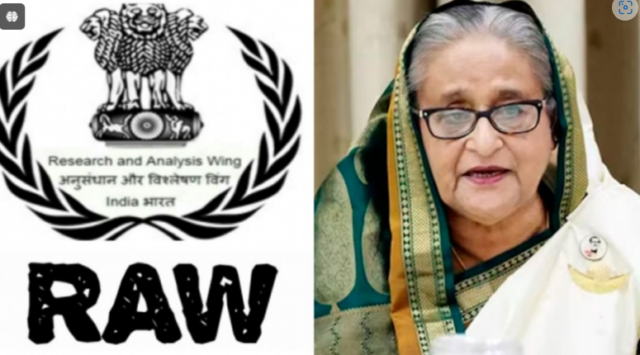On July 16, when Hasina’s government gave the order to shoot students on sight, the situation gradually shifted in favor of the government. Subsequently, at the special request of Sheikh Hasina and under the direct supervision of India’s National Security Advisor, 400 trained officers of RAW went to Dhaka. According to them, after suppressing the movement in a manner similar to Kashmir, they returned to Delhi on July 28.
However, RAW was not prepared for the subsequent situation. According to them, they lost to the CIA’s tactics on August 5. Although the decision for Sheikh Hasina to move to Delhi on August 5 was not made suddenly; it was planned on August 2 as part of Plan ‘C’ by Hasina and India’s National Security Advisor, Ajit Doval. It is worth noting that India considers South Asia as its security-related region, and thus the National Security Advisor often intervenes in the matters of these countries.
After August 5, RAW planned a counter-revolution under the guise of a minority rally on August 10. A large number of Indian journalists were present in Dhaka on that day for this reason. When that failed, a second coup was planned for August 15, which also failed. However, the recent Ansar rebellion plan in the country was an internal affair of the Awami League, and The Mirror Asia found no evidence of RAW’s involvement in it.
The Mirror Asia has been investigating India’s next possible plans for the past week. Recently, Hasina has been relocated to a government residence in South Delhi. However, another source claims that Hasina is currently staying in a secure building of India’s internal intelligence agency, the Intelligence Bureau (IB). In recent times, India has held dozens of high-profile meetings with her. India’s National Security Advisor and the head of RAW are personally overseeing Sheikh Hasina and frequently meeting with her.
To restore her morale, Hasina’s daughter, Saima Wazed Putul, is also meeting her regularly. Hasina is also doing regular yoga. Observing the security arrangements of Hasina’s new residence and her appointment of personal staff, a Bengali journalist working in Delhi told The Mirror Asia that Hasina is likely to stay in Delhi for a long time.
The Mirror Asia is closely monitoring the next steps of Hasina and India. For this, The Mirror Asia has spoken with two journalists who keep an eye on Bangladesh, an official from the Prime Minister’s Office, two think tank researchers, and a secret service agent.
It is known that India currently wants to walk a tightrope. Firstly, they are monitoring the movements of the new government in Dhaka and the protesting students. On the other hand, diplomats have been instructed to maintain communications with the BNP and the Jatiya Party.
Meanwhile, a source in the Prime Minister’s Office says they are also willing to negotiate with Jamaat-e-Islami. However, they want to open a “window” for discussions with Jamaat, not a “door,” as mentioned by an official from the Prime Minister’s Office.
It has been learned that two projects have been assigned for now. The first project runs from September 1 to November 30. The objective of this project is to present a narrative that the Yunus government is influenced by Shibir, Hefazat, and Hizb ut-Tahrir through leftists. At the same time, a section of Hefazat-e-Islam, which has long-standing ties with RAW, is being convinced that “Dr. Yunus is an usurer, a U.S. agent, and not a good Muslim in any way. In a few days, this government might recognize gay rights.” This group has also been instructed not to align with Jamaat or other religious-based parties.
However, the mission places the most emphasis on creating fear regarding the involvement of Hizb ut-Tahrir with the protesters and their ideology. The Mirror Asia has learned that three leftist former student leaders with an “anti-American imperialist” stance have already held lengthy discussions with a journalist working in Delhi from West Bengal, who has expressed a commitment to work with them in the future.
Meanwhile, regarding the situation in Bangladesh, RAW has formed a subgroup to accomplish the “Bangla Mission.” Recently, comments from one of the coordinators of the anti-discrimination student movement regarding the “Chicken Neck” issue and some statements from the “Seven Sisters” were also considered by the intelligence sub-team “Bangla Mission,” formed to monitor Bangladesh. Each of their Facebook statuses has been translated into Hindi and English and presented to Victor-2. Victor-2 is a protocol of RAW, responsible for making the latest decisions regarding Bangladesh.
On the other hand, two think tanks in Delhi and one in Assam have been conducting research for the last 20 days on the movement’s coordinators and their ideological beliefs. Reports from the three organizations suggest that the party these coordinators are likely to form will be an anti-India political party. While they hold revolutionary leftist ideas, they will not be opposed to religion. According to researchers, this ideology will essentially make the political space for the country’s leftists entirely void, creating a potential conflict between the leftists and the youth. It is from this concern that RAW is reaching out to leftist student leaders.
Moreover, if the recent popular uprising is given a philosophical and historical foundation, the exclusive narrative of the Liberation War in Bangladesh’s national history would be undermined, weakening India’s soft power in Dhaka. If the spirit of this uprising is embraced more broadly, RAW’s second plan, “Resettle Awami League 2025,” will also become very challenging.
A Bangladesh researcher based in Delhi told The Mirror Asia that Hasina has extraordinary abilities to make a comeback. She returned to power in 1981, and 1996, and after surviving the 2004 grenade attack, she returned invincibly in 2009. I believe Hasina can come back again; she may run the party from Delhi, but her party can return. However, the crisis will arise if the history of the popular uprising becomes part of the national history and literature, forming an ideological foundation. That is why we do not want to give much time to the students. India believes that the Awami League would be safer under a BNP regime. If the various crises of BNP come to the forefront and a power struggle between BNP and Jamaat develops, the Awami League might gain political space.
A Bangladesh expert from Assam spoke with The Mirror Asia. He said that the dream Hasina had of connecting the Northeast with India’s mainland has completely shattered. The BNP will not cooperate with India in this case. The new political party will be much more youth-oriented, focusing more on political rhetoric than diplomacy. We believe some of their decisions could pose security risks to the Seven Sisters.
Therefore, at this moment, India’s priority is to create instability by portraying the current government as influenced by Hizb ut-Tahrir and Shibir by November, without allowing the youth to form any party. On the other hand, by mentioning the election environment, India aims to bring the Awami League back into open politics within the next six months, as revealed in The Mirror Asia’s week-long investigation.
Source: ‘র’ ও হাসিনার পরবর্তী পরিকল্পনা কী? | সংবাদ | দ্য মিরর এশিয়া (themirrorasia.net)










